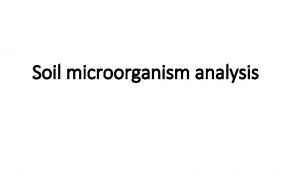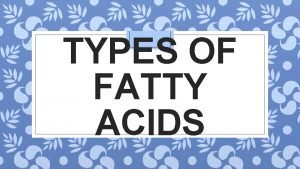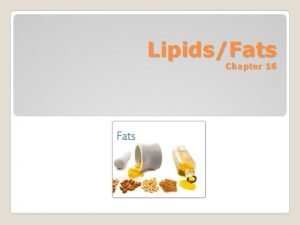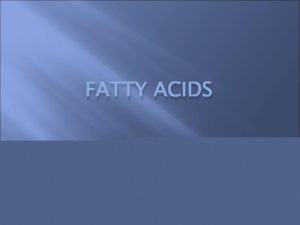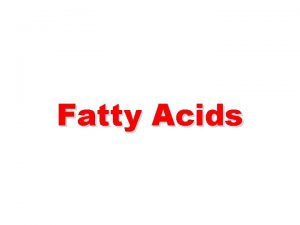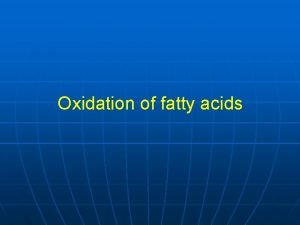Soil microorganism analysis Phospholipid fatty acids PLFA analysis





- Slides: 5

Soil microorganism analysis

Phospholipid fatty acids (=PLFA) analysis Some PLFA are specific to the different microorganisms functional groups (fingerprints). From PFLA analysis, we can get: => PLFA profiles : percentages of the different microorganism functional groups: bacteria, gram +/ gram -, actinomycetes, fungi. => From these profiles, we can get information about the variations/shifts in microbial community structure and biomass.

Pros & Cons of PLFA analysis Advantages: - Rapid and inexpensive - Reproducible and sensitive - Direct extraction from soil and no culture of microorganisms - Maybe more sensitive to detect shift in community composition than genetic analysis Disadvantages: - Taxonomic resolution (eg: actinomycetes, gram -/+ bacteria, arbuscular mycorrhizae fungi) - Specificity (same PFLA can be found in different functional groups) Kirk et al. 2004 Frostegard et al. 2010 Ramsey et al. 2006

Genetic methods + : microorganism diversity and community structure, high taxonomic resolution, reproducible, large number of samples analysed simultaneously - : Expensive, taxonomic ambiguity in microbes, only detects dominant bacteria, dependent on extraction efficiency ÞPCR-based methods : Denaturing gel gradient electrophoresis (= DGGE) => usually used as complementary to PLFA analysis, restriction fragments length polymorphism (=RFLP) + : Detect non-culturable and non-abundant bacteria - : PCR bias ÞNon PCR-based methods : DNA microarrays, DNA hybridization, … + : No PCR bias, DNA studied in situ - : Only accurate in low diversity systems

Other possible methods • Biolog ecoplates : metabolic profile (metabolisation of 31 specific carbon sources) + : Fast, reproducible, inexpensive - : Only culturable fraction of microorganisms, favour fast growing organisms, sensitive to inoculum density • Basal respiration (= BR) + Substrat-induced respiration (= SIR) : soil activity • Microbial biomass (Cmic): difference between organic C extracted by 0. 5 M K 2 SO 4 from chloroform-fumigated and non-fumigated soil
